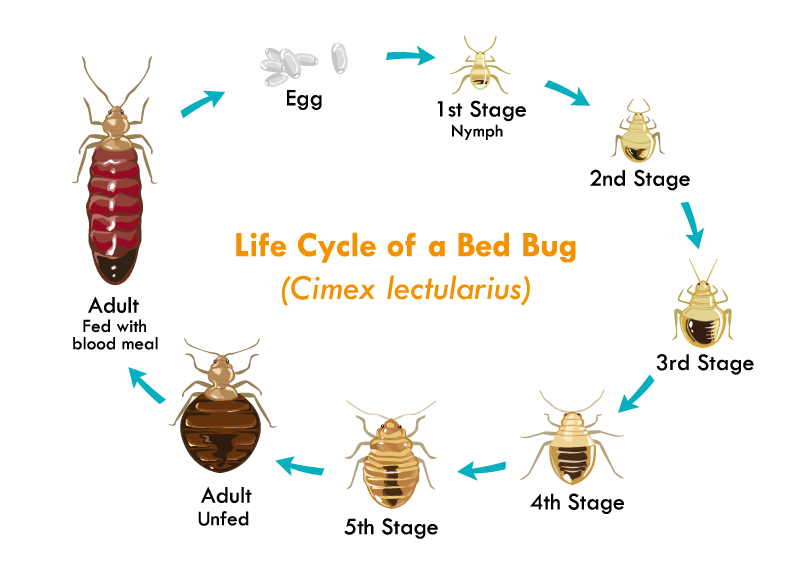Most people hope to go their whole lives, never seeing a bed bug in real life. Unfortunately, bed bugs are on the rise all over the world, which means the chances of you encountering them are only getting more likely. How can you be sure what you are seeing?
Unless you are dealing with a large-scale infestation, bed bugs will come out at night. When we sleep, the amount of CO2 we exhale increases, and bed bugs can sense this increase. Once they know you are sleeping, they will come out of hiding to feed. Their short, flat bodies allow them to hide in the folds of furniture and bedding. After a feeding, the insect’s rear will be swollen with blood. A typical bed bug life cycle has 7 stages.
- Egg
- Nymph stages 1-5
- Fully grown bed bug

Stage 1: Bed Bug Eggs
A bed bug’s life begins in a tiny egg. Within their lifetimes, female bed bugs can lay up to 500 eggs! Bed bugs lay eggs in tight cracks or crevices. The bed bug eggs hatch time is two weeks.
Can you see bed bug eggs?
Often described as small grains of rice, bed bug eggs are no bigger than two grains of salt. While it is possible to see them, it can be difficult to be sure what you are seeing. This is why visual detection is only 40% – 50% accurate.
Stages 2-6: Bed Bug Nymphs
Newly hatched bed bugs enter the nymphal stages of their development. Depending on temperature and food supply, it can take 1-4 months for these young bed bugs to reach adulthood. During this process, they will go through five molts. Each malt will cause the nymph to change size, growing from 1.5mm to 4.5mm. The color of nymphs will also change. They will start clear/white before turning yellow/tan on the way to the reddish/brown of adults.
Stage 7: Adult Bed Bugs
A mature bed bug will try to feed weekly but can last up to a year with no food. The life span of a bed bug commonly ranges from four months to a year, depending on temperatures and conditions within the residence. A female bed bug will have a rounded tip at its rear, and males will have a pointed tip.
How big are bed bugs?
Upon reaching maturity, the bed bug will be 5.5mm in length (about the size of an apple seed).
If you are waking up to strange bites and think you have a growing infestation. Don’t delay proper treatment time with DIY tools trying kill bed bugs and their eggs. Reach out to the experts at Pronto Pest Management today to schedule an inspection.
